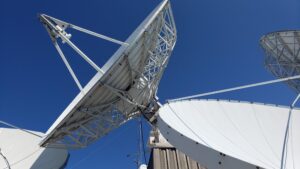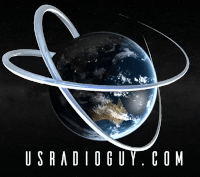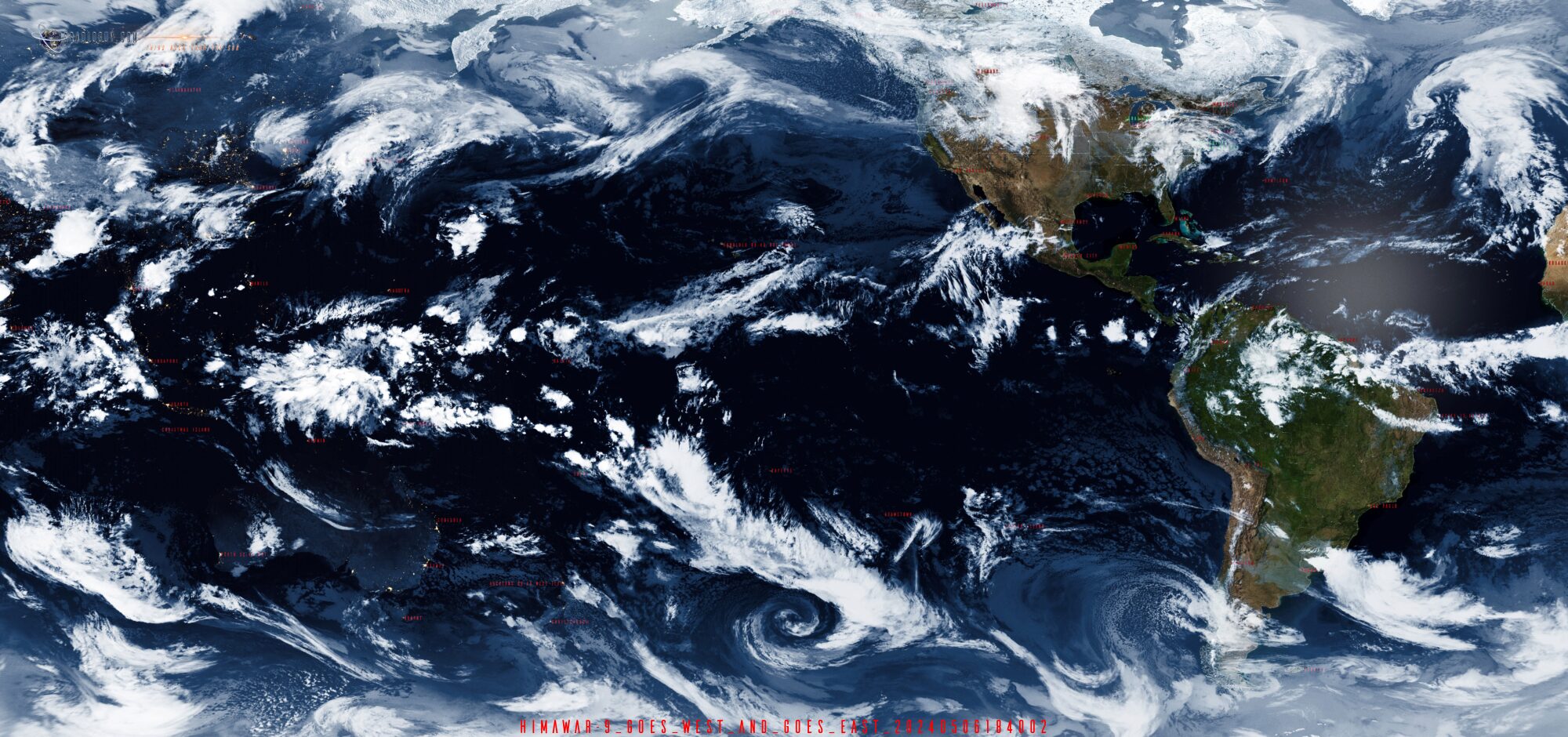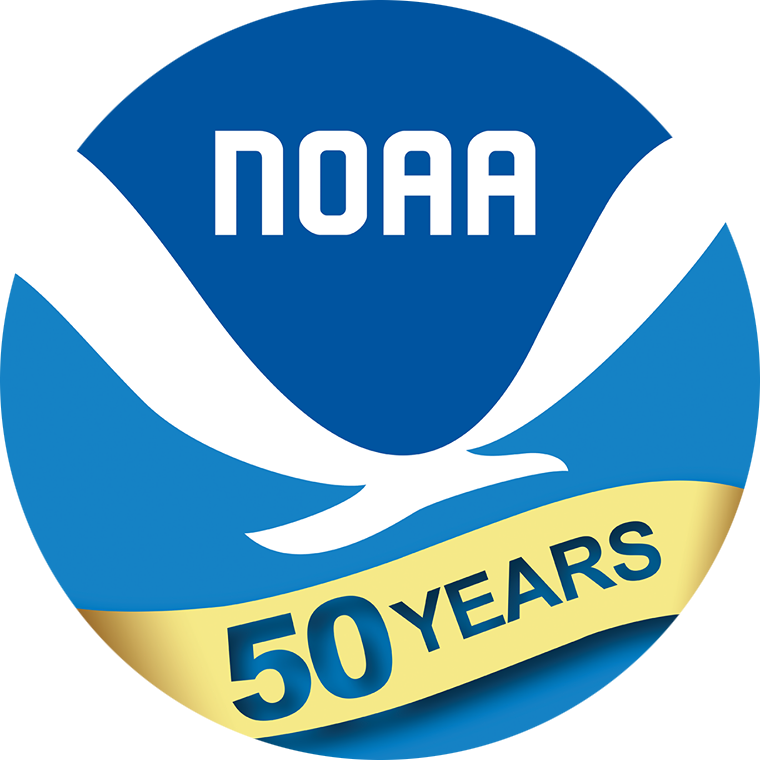
Current GOES 16 & 18 False Color Satellite Imagery
“I don’t want to believe. I want to know.”
― Carl Sagan
Current GOES 16 & 18 Color Satellite Imagery
UPDATED 04/21/2024 in addition to GOES 16 and 17 Now Includes reprojected imagery with Himawari-9 and VIIRS Daily Sea Surface temps, and VIIRS True Color Imagery
Below is the current GOES-East and GOES-West Satellite Imagery.
I have an automated script to upload, from both of my GOES receivers, the GOES 16 and 18 Imagery received within the 1/2 last hour. If you are seeing a completely black image, it is because it is a nighttime view of the Earth from the Satellites.
GOES is sort of color-blind. That is, it does not “see” in Red Green Blue (RGB), there is no ‘green’ channel. The ABI has 16 separate bands, and in this case, Channel 02 and Ch13 are used to create a false-color image. The Near-Infrared Band (CH02) or ‘veggie” (which is referred to because of the strong elected signal from the vegetated surface can be used to fill in the green wavelength. (explained more on the GOES Satellite Reception pages) You may have to reload the page to see the newest imagery. Note: To see the last 36hours of GOES 16 imagery as animation, click here.
Satellite: 75.2W GOES 16
Elevation: 38.5°
Azimuth (true): 160.5°
Azimuth (magn.): 163.7°
GOES EAST (GOES-16)
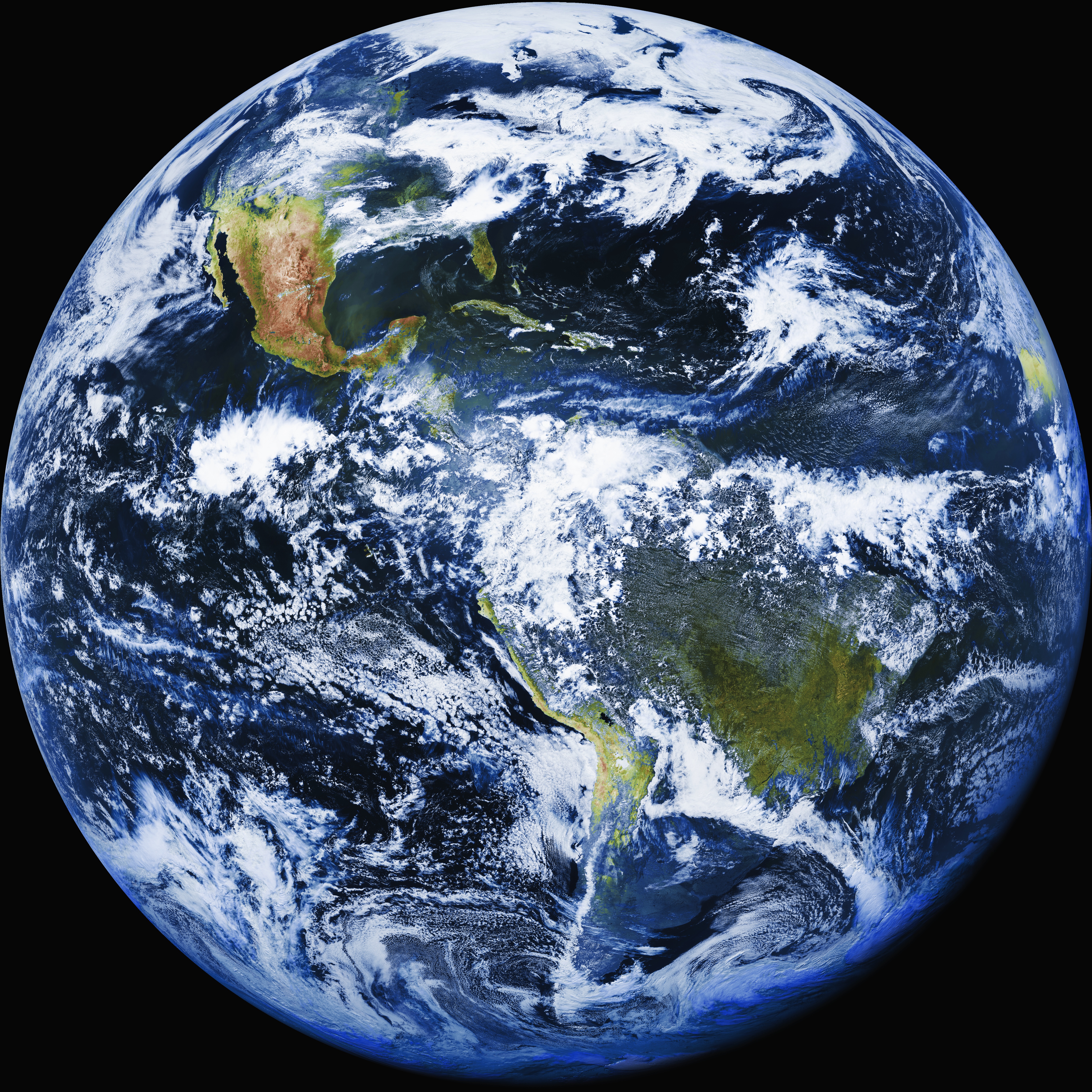
Satellite: 137.22 W GOES 18
Elevation: 20.9°
Azimuth (true): 238.8°
Azimuth (magn.): 242.1°
GOES WEST (GOES-18)
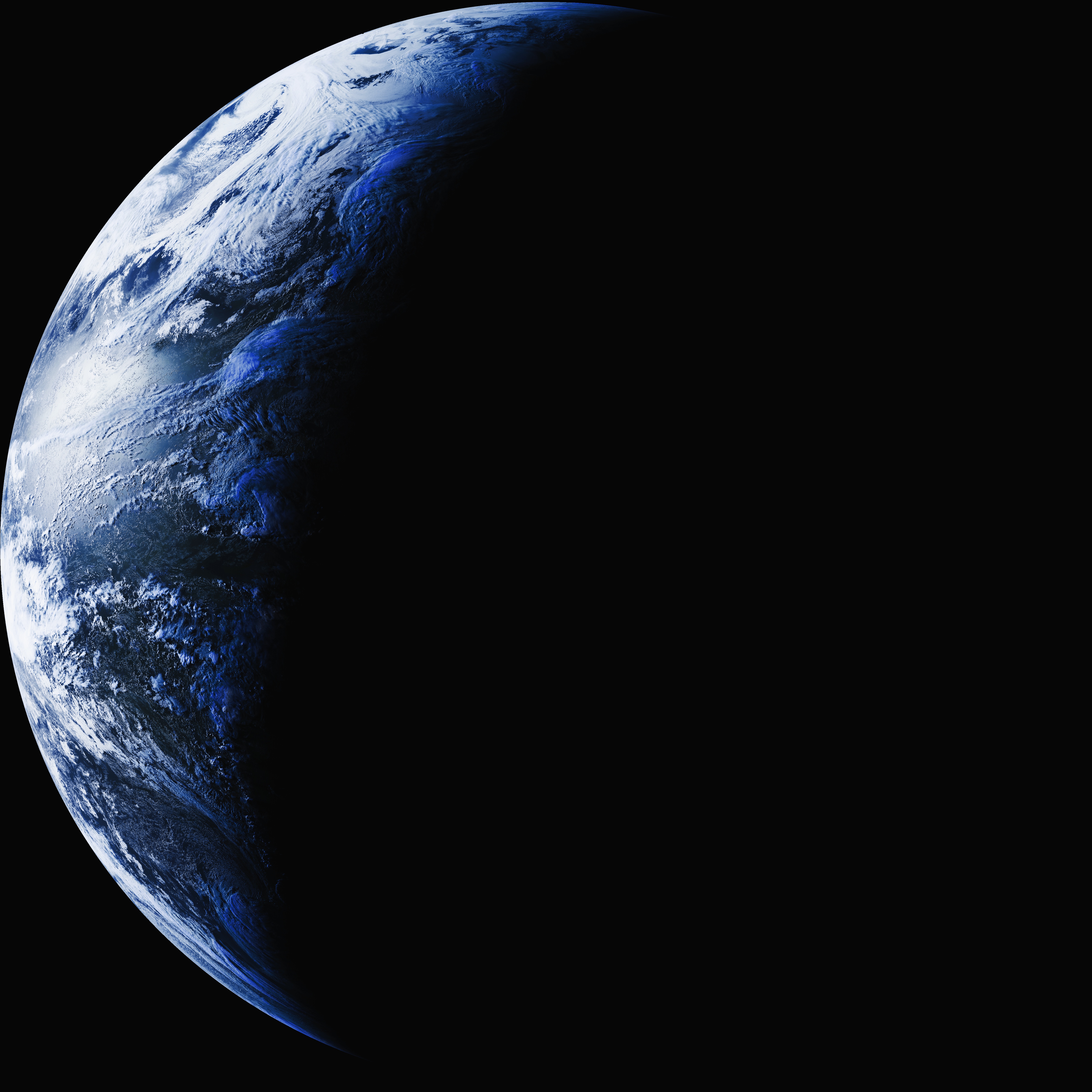
Reprojected Imagery of GOES 16-18 full color using Sanchez Tools – images uploaded at “Satellite High Noon” from my QTH once per day.
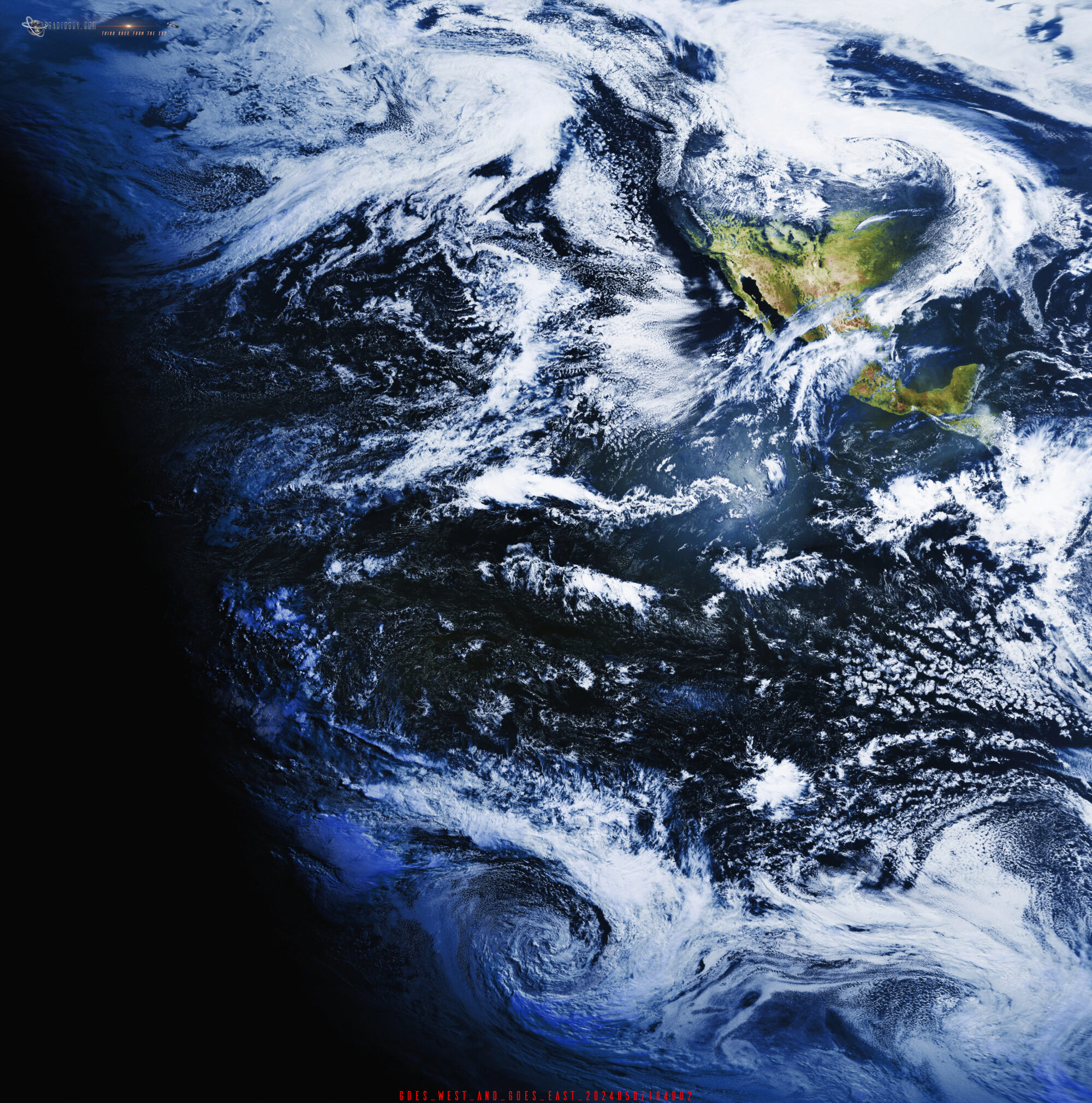
Reprojected Imagery of GOES 16-18 and Himawari-9 with Day and Night Mask using Sanchez Tools – images uploaded at “Satellite High Noon” from my QTH once per day.
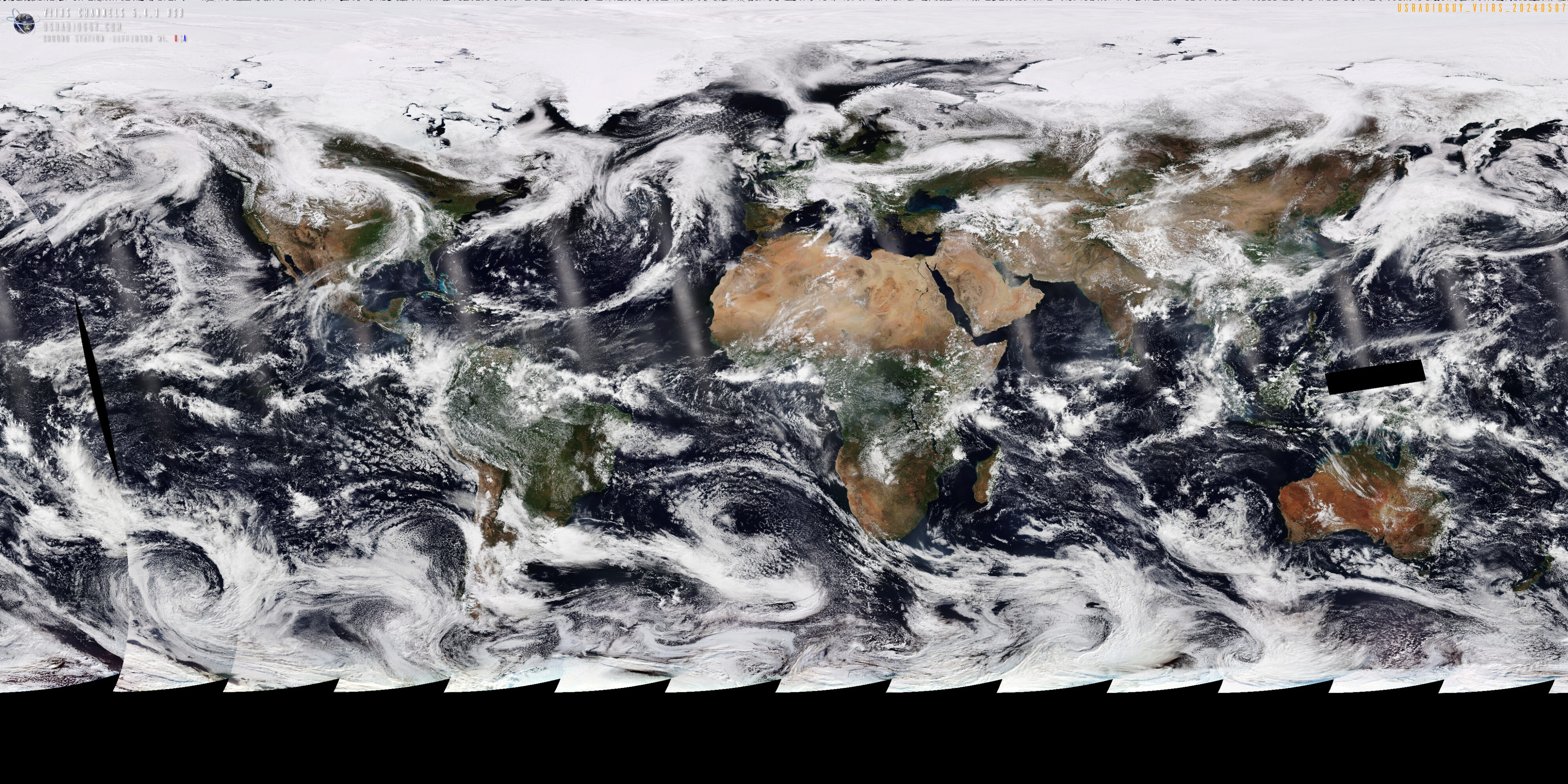

Earth – Sol system, Sector 001, Alpha Quadrant
A typical Class M Planet, within the Goldilocks zone
A spheroid-shaped terrestrial planet with a circumference of 24,901 miles (40,075 kilometers), a mass of 6.6 sextillion tons (5.9722 x 1024 kilograms) (5.513 grams per cubic centimeter). Known to host a plethora of life forms. A relatively new planet having formed only 4.5 billion years ago.
One of the indigenous life forms has achieved space flight and has placed many artificial “satellites” into orbit around the homeworld and in orbit around the fourth planet in the system. Probes have been sent out in many directions into space as well.
Thank you
None of this would be possible without the National Oceanic and Atmospheric Administration or NOAA. Allowing anyone with some moderate talent to be able to tap into this resource is amazing. In addition to the fantastic resources and programmers who have, (and in many cases for free), authored the software that allows reception of all this satellite data, I want to thank some of the government and educational institutions that have patiently answered my technical questions.
- The Office of Satellite and Product Operations (OSPO)
- National Environmental Satellite, Data, and Information Service (NESDIS)
Space Science and Engineering Center (SSEC) Really a fantastic resource and the staff have been incredible at answering my questions!
Cooperative Institute for Meteorological Satellite Studies (CIMSS) Yet another fantastic resource and have again helped me with my tech questions.
Advanced Satellite Products Branch (ASPB) For answering my questions on new ‘products’. I have to admit, I am lucky that the SSEC and CMISS are right here in Wisconsin as part of the University of Wisconsin Just a few miles from me!
I have to admit, I am lucky that the SSEC and CMISS are right here in Wisconsin as part of the University of Wisconsin Just a few miles from me!

